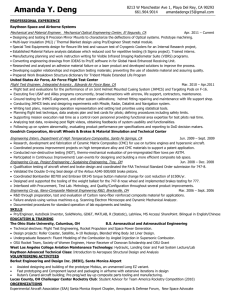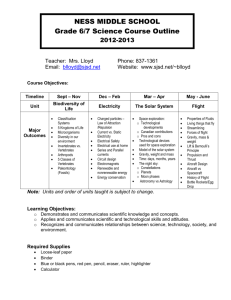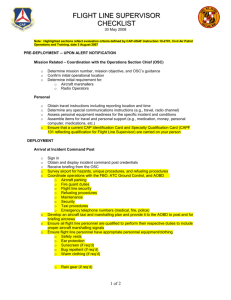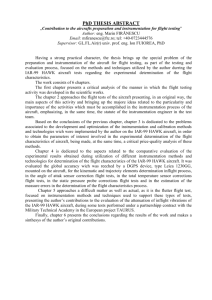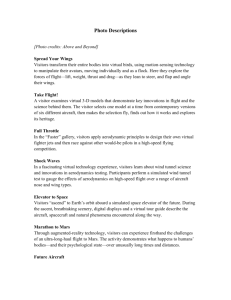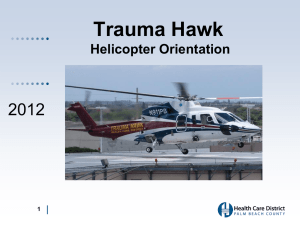Flight Simulation – Ch 8 - Rose
advertisement
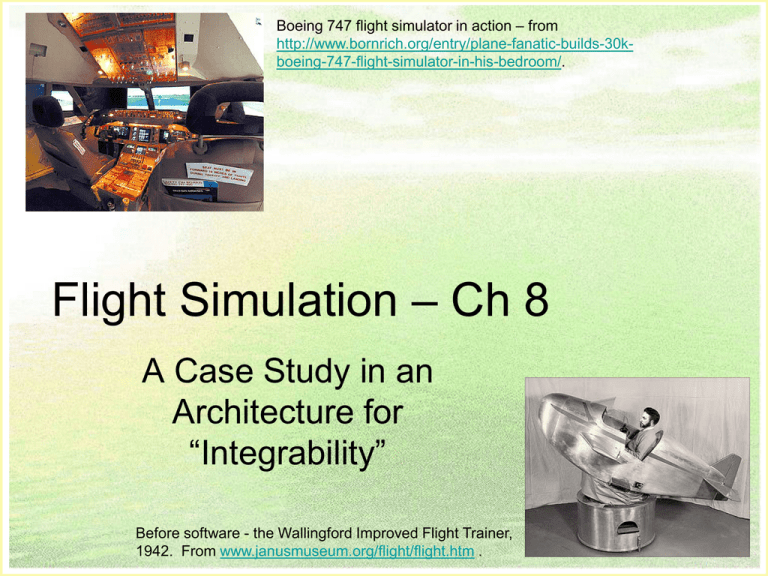
Boeing 747 flight simulator in action – from http://www.bornrich.org/entry/plane-fanatic-builds-30kboeing-747-flight-simulator-in-his-bedroom/. Flight Simulation – Ch 8 A Case Study in an Architecture for “Integrability” Before software - the Wallingford Improved Flight Trainer, 1942. From www.janusmuseum.org/flight/flight.htm . Slide 1 Coming Up • Today… – Term paper - Intro – Ch 08 – Flight Simulation – this “How to clean the Gherkin” • Intro – see for example YouTube vids: http://www.youtube.com/watch?v=JGyJ qXJWkuY . • Thursday – Present outcomes for Project 2 – Turn in Thurs night (and HW 3 Yikes!) Slide 2 Overview • Structural Model – Minimize modules • N-Square charts • Requirements and Qualities – Three roles – Lots of constraints • Architectural Solution – Treatment of time (realtime) Slide 3 Pattern - Structural Model • Simplicity and similarity of the system’s substructures • Decoupling of data- and control-passing strategies from computation • Minimizing module types • A small number of system-wide coordination strategies • Transparency of design Slide 4 Structural Model Slide 5 Roles • The Crew – The people being trained “Maybe that one’s not one of ours? • The Simulator Instructor – Monitors crew performance – Initiates training situations • The Environment – Atmosphere, threats, weapons, other aircraft Modern simulator from the outside. Slide 6 Requirements and Qualities • Real-time performance constraints • Continuous development and modification – Maintains “verisimilitude” = realism, as the airplanes changed specs • Large size and high complexity • Developed in geographically distributed areas Slide 7 Problems • Expensive to debug, test, and modify – Increased cost of integration • Unclear mapping between software structure and aircraft structure – Many coupling effects to be considered • E.g., pilot moves the rudder and aileron controls, which move the control surfaces, which affects the aerodynamics and causes the aircraft to turn. – Performance “fidelity” is # 1 goal Slide 8 Architectural Solution Treatment of Time • Periodic time management – A fixed time quantum based on frame rate – Non-preemptive cycle scheduling – invokes each process for a fixed time quantum • Event-based time management – “Interrupt” based – Adds new events into event queue – Does in order of soonest needed • But all messages from a single source must be done in order! • Mixed-time systems – The two above systems must interact Slide 9 Architectural Solution, cntd Structural Model Architectural Pattern • Executive – Handles the coordination issues • Application – Handles computation of the simulation – Functions are implemented by subsystems Slide 10 Modules • Executive – Timeline Synchronizer – Periodic Sequencer – Event handler – Surrogate • Connects air vehicle model to environment model • Application – Subsystem controller – Controller children Slide 11 Allocation of Functionality to controller children Based on OO modeling of the “objects” of the real airplane: • Kinetics – the physics • Aircraft systems – distribution of energy within the airframe • Avionics – ancillary support • Environment Slide 12 Decomposition • n-Square Charts – What “Partition 2” communicates with… Partition 1 Outputs Inputs Partition 2 Outputs Partition 3 Inputs Slide 13 Air Vehicle Model Domain • An example… Kinetics Group Loads Vehicle State Vector Power Aircraft Systems Group Power Inertial State Loads Avionics Group Ownship Emissions Environment Emitter Data Environment Group Atmosphere, Terrain, and Weather Vehicle Position Slide 14 Summary How the architecture achieves… • Performance – Executive with time budgets, and – Periodic scheduling strategy • Integrability – All data and control pass through a subsystem controller as an intermediary – Each partition was restricted in inputs and outputs • Modifiability – Few base module configurations for the designer and maintainer to understand Slide 15 Questions? Slide 16

